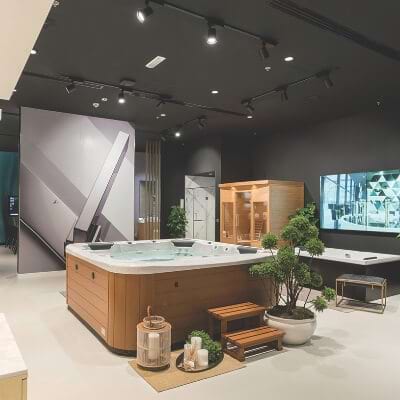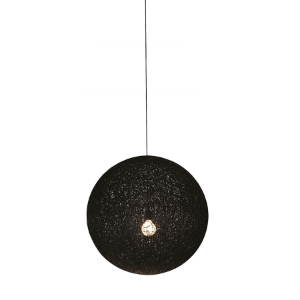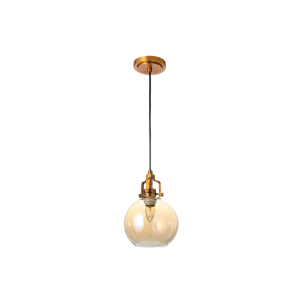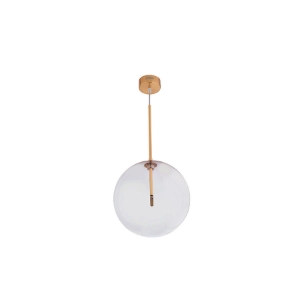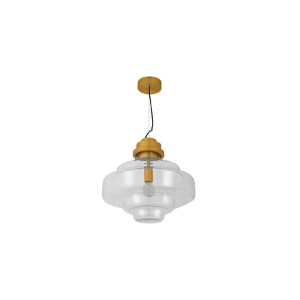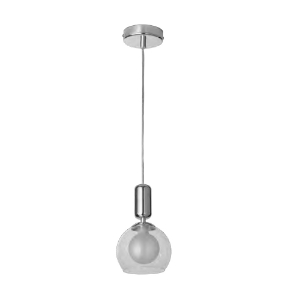우리는 더 나은 환경을 제공하기 위하여 쿠키를 사용합니다. 사이트를 계속 이용하거나 상자를 닫을 시 쿠키 사용에 동의하는 걸로 간주하게 됩니다.
- ASIA PACIFIC
- MIDDLE EAST
- AFRICA
- EUROPE

Ceiling Lights
Filters
Sort by
- It’s either your controller or your power supply, which is either failing or exceeding its wattage capacity. It’s most likely the power supply/transformer if it’s older than 3 to 5 years. If your power supply is outside or in a place where there isn’t much air circulation, it will deteriorate more quickly.
- The power supply may be thermally shutting down when it gets too hot and then resetting once it cools down. There could be a few reasons for it to shut down. Your LED strip is overheating because it requires more watts than the power supply can provide.
- Your LED strip has developed a delayed failure of a component on the strip itself, leading it to draw far more energy (and so overheat) than it was designed as “thermal runaway,” which signifies that the entire strip is about to fail. As a result, your power source has simply become insufficient to meet the LED strip’s demands.
- The square design will fit in most indoor situations without difficulty. Because the square format has a professional feel to it, it is frequently found in commercial indoor settings. The square LED panel will also be used in many home settings since when choosing the proper shape is complex, the square ones function well.
- Round LED light panels are preferred by those who want to be a little more creative with their lighting. This shape is adaptable, simple to set up, and manageable. The form is ideal for use in locations that require consistent, low-maintenance lighting. For instance, consider the construction of an industrial structure. Different dimensions are available. However, all LED panels have an optical illumination angle. This guarantees that the light is dispersed evenly. A range of color variations is also available.
- When comparing the luminous efficacy of square and flat panels to round panels, it is clear that the square or flat panels have higher luminous efficacy. Choose from the hundreds of panel designs available at Jaquar.
- However, the circular panel will, on average, outperform the LED lights in terms of efficiency. The spherical LED panels, on the other hand, are more suited to indoor use. They’ll be sensitive to dampness if they’re installed outside. Water has the potential to harm internal circuitry.
- LED strip lights are typically inexpensive to run and consume relatively little electricity. They consume around 90% less energy than incandescent bulbs and 70% less energy than halogen lights to generate the same amount of light. This is due to LEDs’ tremendous efficiency and the fact that they squander relatively little energy through thermal radiation.
- Simply put, LED technology is considerably better at preventing inputted energy from being wasted as thermal radiation or heat.
- LED strips are also notable for their heat control capabilities. There is no particular location where excessive heat builds up because the heat is diffused across the entire strip, contrary to traditional lights.
- The human eye’s perception of brightness is measured in lumens. We’re all used to measuring the brightness of light in watts because of incandescent lighting. When choosing which LED strip light to look at, the lumen is the most crucial factor to consider. When comparing lumen output from one strip to the next, keep in mind that there are several ways to say the same thing.
- The color temperature of light, measured in degrees Kelvin, is referred to as CCT (Correlated Color Temperature) (K). The white light’s appearance is directly affected by the temperature rating, which runs from cool white to warm white. As the Kelvin temperature rises, the hue shifts from yellow to yellowish-white to white, then to a bluish-white (which is the coolest white).
- LED strip lights are often supplied on a 5 meter (or 16′ 5″) reel (spool). Individual portions are soldered together to make a whole reel since the machines used to “select and place” the LEDs and resistors on the flexible circuit board usually are 3′ 2″ in length. If you’re going to buy something, make sure it’s by the foot or by the reel.
- One of the reasons we have begun to migrate to LEDs is because of power consumption. Wattage indicates how much electricity we use while these lights are turned on, and hence how much we’ll have to pay at the end of the month. So before you buy, make sure to double-check the wattage per foot, meter, or reel.
- You should verify the quality claims to ensure that your LEDs survive their stated lifespan, are safe around your house and company, and do not require additional maintenance expenditures to replace.
- You can use led strip lights and place them up, down, and across the frames. Then, bend and twist the strips in whichever way you like to decorate a space or a corner.
- Cover outdoor frames with LED lights that will withstand rain and snow. By alternating different-colored strips that change colors automatically, you can give your house a unique and festive look.
- Spell out different words and phrases with tiny, flexible LED modules available at Jaquar. Ensure that your message is visible late into the night, which is assured by LEDs’ established reliability. At any time of night, the lights glow for endless hours without flickering or burning out.
- Wrap small LED lights around trees and plants in your home. Since LED lighting is great for highlighting, invest in a piece that highlights a single garden object. From the floor to the ceiling, these LED lights are anywhere in or around the garden.
- There are a lot of low-cost brands that produce third-grade items. That’s why they came up with a diffuser for indoor use and a lens for outdoor lighting such as street lights and floodlights.
- You will be able to see the individual diodes if the diffuser is also of poor quality, which can hurt and harm your eyes. Jaguar, for example, is a high-quality brand. However, most modern street lighting does not have lenses on the diodes. This is done to save money because, under government procurement, the lowest bidder gets the order, even if he compromises on quality.
- When it comes to choosing LED light that is good for your eyes, color is also crucial. It is beneficial for your eyes to select lights that are 5700K; the best technique is to look for a bluish hue. If the LED has a bluish tint, it does not have a diffuser. When purchasing LEDs, look for reputable brands or those that do not have a bluish hue.
- Lighting can be uncomforting at times, which means light layers are missing. In a room, too little — or even too much — of one type of lighting can be unsettling. Humans are incredibly light-sensitive, and dark or harsh environments can cause discomfort.
- All of the lightings should be used in concert to produce a room that is not just well-lit but also adaptable. For example, hardwired fixtures should always be placed on a dimmer for added control.
- Make a lighting strategy. When remodeling or building, consult with a lighting consultant to establish your project’s lighting requirements. Based on the size of the room and the details (such as lumen output) of a specific light fixture, an expert can assist you in determining the appropriate number of lights.
- See if you can make the lights you already have more controllable. For example, put them on different switches to switch on independently or use a dimmer to give them more control.
- Like many other modern species, plants have a clock mechanism that tracks daily (circadian) ecological cycles. The light and temperature cycles are the two most essential of these cycles. Therefore, plants’ circadian rhythms will be disrupted when lights are turned on, but they should return to normal within a few days after the lights are turned off.
- The majority of lights emit a lot of heat. Heat can stifle your plant’s growth by causing the stomata on its leaves to contract to retain water. Closing stomata regularly might be very detrimental to the plant.
- Plants absorb light, but they require it to accomplish photosynthesis. However, too much light (sunlight during the day and artificial light at night) can promote excessive synthesis, which is harmful to the plant.
- Some plants thrive in the dark. As a result, light is out for them. If the plant is damp, artificial lights can short circuit, causing the plant to catch fire.
- The overall light output is measured in lumens. The higher the lumens, the more light is produced. An LED panel’s efficiency is calculated by dividing its lumens by its power (watts). An LED panel’s efficiency increases as the lumens per watt increase. In terms of fuel efficiency, this is similar to liters-per-100 km. Ensure that the lumens-per-watt rating is accurate.
- The color of the light is a personal choice based on usage and preference. The color temperature of an LED panel is expressed in Kelvins and describes how the light from that panel will appear (K). 4000 to 5000K for a fresh, modern aesthetic perfect for offices, schools, retail, and commercial spaces. For LED panels, this is the most common option. The color temperature ranges from 3000 to 4000 k, commonly used in basements and garages to simulate natural light.
- Emergency lighting for multiple panels is required in most systems. For example, in a power outage, the emergency LED panel will give light for at least three hours in specific areas such as escape routes. LED panels are best used as emergency panels because they consume less electricity. There are even emergency-ready variants of integrated LED panels. Jaguar, pocket-friendly, and energy-efficient, offers the best-LED light panels.
- It’s critical that LED lighting saves energy while emitting a pleasant, warm glow. This will not only save you money on power, but it will also help you save money on replacements because they will last longer. So always keep an eye out for LED companies that offer energy-saving lights for a variety of applications.
- LED firms should always offer new and innovative fixtures to increase the aesthetic appeal of that place, whether for home or commercial uses. With Jaquar lighting, you can count on some of the most famous designs to capture your attention.
- Discover a new era of color lighting with LED solutions that may be used in a variety of industries. Keep a lookout for companies that provide a diverse choice of color LEDs that are both energy efficient and inexpensive. Colour LEDs are also available in a variety of forms, allowing them to be used for a variety of purposes.
- An LED company must comprehend the needs of its customers, and site assessments are necessary for this. This allows the business to anticipate the scenario and enables them to provide immediate assistance with appropriate solutions. Jaquar lighting ensures that professional electricians from the area come out to evaluate the location and provide free help.
- Check to see if the LED company you choose offers an LED fixture warranty and maintenance. For example, highlights Energy is proud of its services, which include a 5-year guarantee and free client maintenance. The recent emergence of LED firms may make it tough to find the correct one for you, but you can cross off your list efficiently with these considerations.
- You may create a magnificent, dramatic, yet luxury lighting effect by measuring the perimeter length of your ceiling, utilizing a high-quality strip with built-in adhesive, and installing the strip behind a recession or coving.
- Measure the perimeter of your room’s ceiling, taking into account all corners and curves. If the power source has a short wire, make sure you measure the distance from your power outlet as well. You can now choose whether you want one or more LED strip reels because LED strips come in different lengths. If the reel has defined copper cutting spots, you may easily cut the strips to size.
- Make sure the power outlet is as close as feasible to the source supply that comes with your LED strip reel for the best visual appeal and minimal wastage of extra reel or extra wire.
- To ensure that your LED strips survive as long as they are supposed to, make sure the space is well-ventilated and that they aren’t jammed behind bulky furniture or heavy curtains.
- Some high-quality strips have a peel-and-stick adhesive incorporated into the back of the strip. This is a preferable option because some manufacturers assure that the built-in tape will help transport away excess heat. Other strips will require you to apply external double-sided tape to the strip first, then to the wall, coving, or ceiling.
- Both daylight and soft white light are beneficial for several reasons. First, daylights have a color temperature of 4500k to 6500k, which means they are brighter and appear whiter. Soft white lights, on the other hand, are closer to 2700k to 3000k.
- Both lights are suitable for use in living rooms, but the majority of homeowners choose soft white light. Soft white light makes a room feel more welcome and comfortable. In comparison to harsh white lights, they are also beneficial for your eyes and encourage your body to relax and unwind. If you spend most of your time in your room in the evening, gentle white lighting may be the ideal option for you.
- If your furniture, walls, or floors are dark, daylight lighting may be preferable. Alternatively, daylight will be more helpful if you spend most of your time in your living room throughout the day.
- Depending on your preferences, both types of lighting will function well in living rooms. If you want your room to be a relaxing and unwinding space after a long day, use soft white light. Use daylight in your living room to improve lighting for hobbies and work.
- The ground connection is strictly for safety. There should be no current flowing in the ground connection, regardless of the load. Its goal is to keep voltage away from the external components. A small amount of water in the incorrect area might cause a lethal voltage to appear on parts that you can touch.
- If they’re grounded, the voltage is safely bypassed to the ground, keeping the external components at zero voltage. A circuit breaker will trip, or a fuse will blow if enough current flows. However, unless the fixture comes with a metal casing, there is no need or requirement for safe ground. To avoid electrical shock, that metal housing will need to be “Safety” grounded.
- When only one LED is used, the voltage is DC, usually extremely low, under 5 volts, and a resistor controls the voltage if the voltage source is more than that required.
- LED lighting is revolutionary not just in terms of the energy economy but also in terms of service life. While incandescent bulbs often last only 1,000 hours – barely a year with several hours of use each day – LED illumination is commonly rated to last 50,000 hours or more, which would possibly translate to decades if used at the same pace.
- Many of us find it difficult to imagine a light that would endure decades, but LEDs are revolutionizing the lighting business. LEDs allow you to install a light and forget about it for years – similar to how a furnace or roofing system is replaced.
- LEDs are small and may be employed in modular pieces, allowing for a wide range of new design possibilities. Of course, there’s no way of knowing what new decorative fixture designs will emerge in the future, but there are some more practical options.
- Not all lighting fixtures, such as chandeliers, lamps, and sconces, should have the same size. Otherwise, the eyes striving for visual clarity would not find it. A chandelier is a terrific focal point for ample space, such as dining or family rooms. Consider a unique floor lamp or vintage-inspired sconces flanking a piece of wall art in a smaller area.
- Lighting should not overrun a space, but it should also not be lost. When it comes to selecting the ideal light fixtures for your room, scale is essential, and following a few rules will help you get the desired look. Any room’s length plus width in feet should equal a chandelier’s diameter in inches.
- When it comes to lighting, layering is crucial. Every place, including the powder room or entrance, should have at least three sources of light for the most acceptable balance. Just remember to use the accent layer to draw attention to the extra elements you’ve added to your rooms. Jaguar provides the best quality lighting to decorate your house with.
- Dimmers can instantly transform the mood of a room while also saving you money on your electricity bill. To have additional control over your lighting, install dimmer switches in as many rooms and with as many fixtures as you want. To adjust the ambiance and balance artificial and natural light, use dimmers.
- The most prevalent are recessed ceiling lights. They are inexpensive, soft, and simple to install behind a false ceiling. The ideal approach to use them is to deliberately emphasize a part of the room, highlight an area, or put the focus on a wall in an inconspicuous manner. These lights are ideal for a modern home, where lighting and combination lighting layers may transform even the smallest room into a stunning illumination.
- Cove lighting concentrates on the ceiling and casts a soft glow down the walls. For effect, combine it with floor lamps and hanging lights, as well as a spotlight. They are hidden under the crown moldings and can give any room a rich appearance while also reducing harshness. Cove lighting can also be used to draw attention to or accentuate an architectural feature. You can choose false ceiling lights ideal for your home from a varied range of lights at Jaquar.
- The Gimbal recessed lights are versatile and energy-efficient, allowing you to add drama to the area with colored lights or remain modest without sacrificing the room’s aesthetic in dim mode. Gimbal lighting, which is simple to set up, is ideal for directing light to specific objects, such as artwork on the wall of books on the study area’s bookshelf.
- Flush lights disperse light evenly over an extensive area without being harsh on the eyes, making them ideal for low-ceiling spaces. This type of ambient lighting can be used in any room and is a cost-effective alternative to hanging lights. Use this flexible lighting option in corridors and low-ceilinged areas like dresser areas and restrooms.
- Back-lit ceiling panels are ideal for providing a natural glow that is comparable to that of daylight. These easy-to-install, compact, made-to-measure bright ceiling panels are the perfect answer for creating a tranquil environment. In addition, back-lit ceiling panels give a warm and better experience by providing uniform illumination throughout the area.
- Great lighting adds depth and height to your space, creates cozy corners, and highlights your most outstanding features. Therefore, every design aspect, including lighting, is crucial.
- A house can be changed and transformed with the use of good lighting. You combine light and shade to create a relaxing yet dramatic atmosphere in a room.
- It can enhance or detract from the room’s overall color scheme. It also can create an illusion by reflecting light off the walls. For example, lighting may make a space with light-colored furnishings appear larger.
- One of the fundamental objectives of lighting in the interior design realm is to improve the operation of a place. It brightens the room, brings positivity and calmness, and has relaxing vibes for the residents. Good lighting not only lights up your space but also ensures safety to the people living there as well as those living in the neighborhood. So check out Jaquar lighting, as it has always got you covered.
- The human eye’s perception of brightness is measured in lumens. We’re all used to measuring the brightness of light in watts because of incandescent lighting. When choosing which LED strip light to look at, the lumen is the most crucial factor to consider. When comparing lumen output from one strip to the next, keep in mind that there are several ways to say the same thing.
- The color temperature of light, measured in degrees Kelvin, is referred to as CCT (Correlated Color Temperature) (K). The white light’s appearance is directly affected by the temperature rating, which runs from cool white to warm white. As the Kelvin temperature rises, the hue shifts from yellow to yellowish-white to white, then to a bluish-white (which is the coolest white).
- LED strip lights are often supplied on a 5 meter (or 16′ 5″) reel (spool). Individual portions are soldered together to make a whole reel since the machines used to “select and place” the LEDs and resistors on the flexible circuit board usually are 3′ 2″ in length. If you’re going to buy something, make sure it’s by the foot or by the reel.
- One of the reasons we have begun to migrate to LEDs is because of power consumption. Wattage indicates how much electricity we use while these lights are turned on, and hence how much we’ll have to pay at the end of the month. So before you buy, make sure to double-check the wattage per foot, meter, or reel.
- You should verify the quality claims to ensure that your LEDs survive their stated lifespan, are safe around your house and company, and do not require additional maintenance expenditures to replace.
Copyright © 2025 Jaquar Global. 판권 소유.
Powered by nopCommerce

